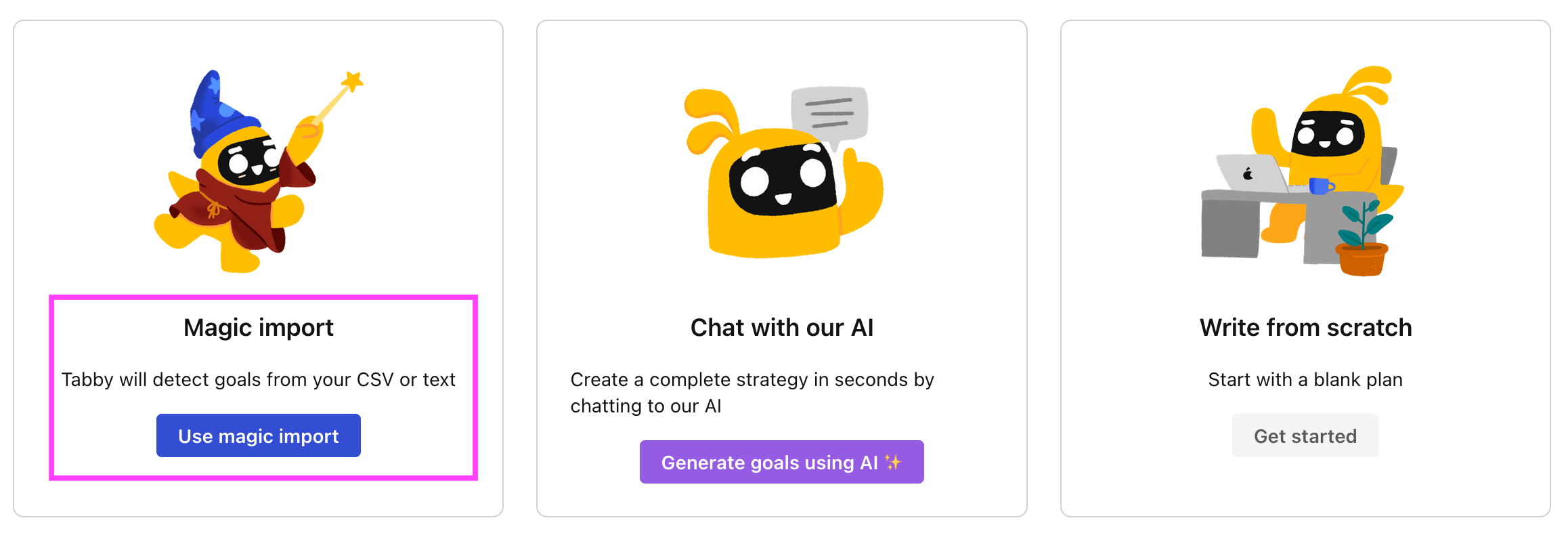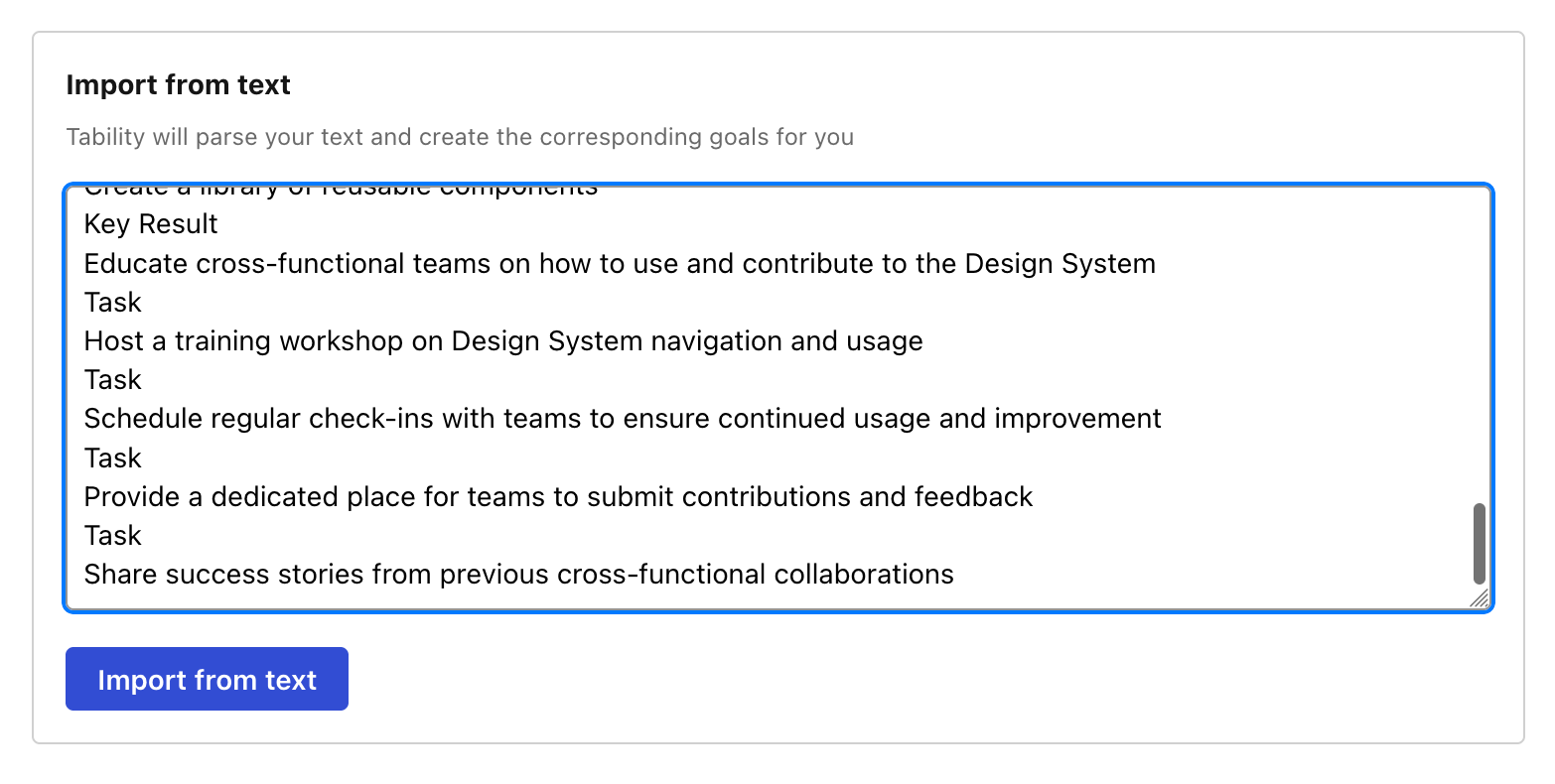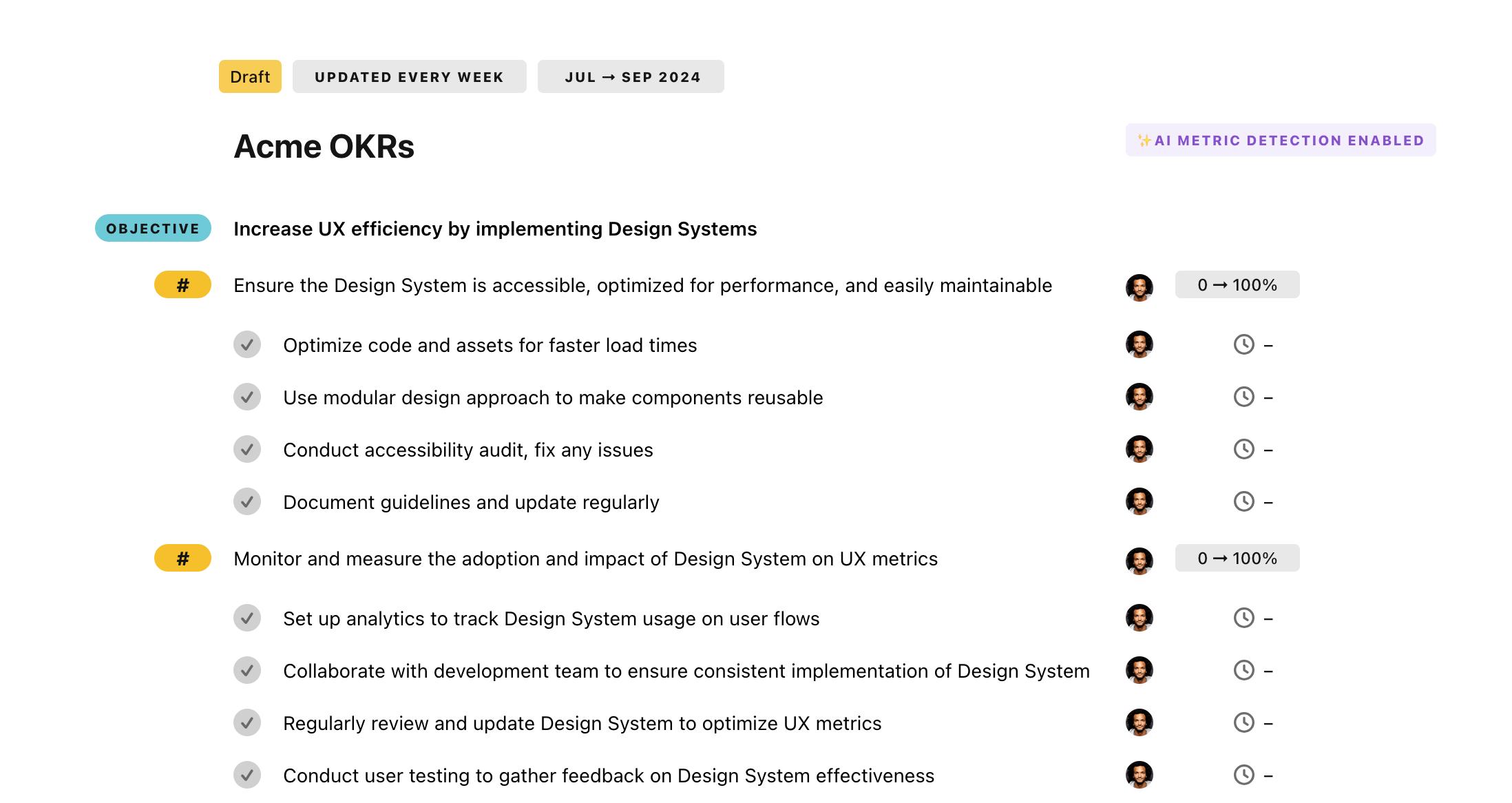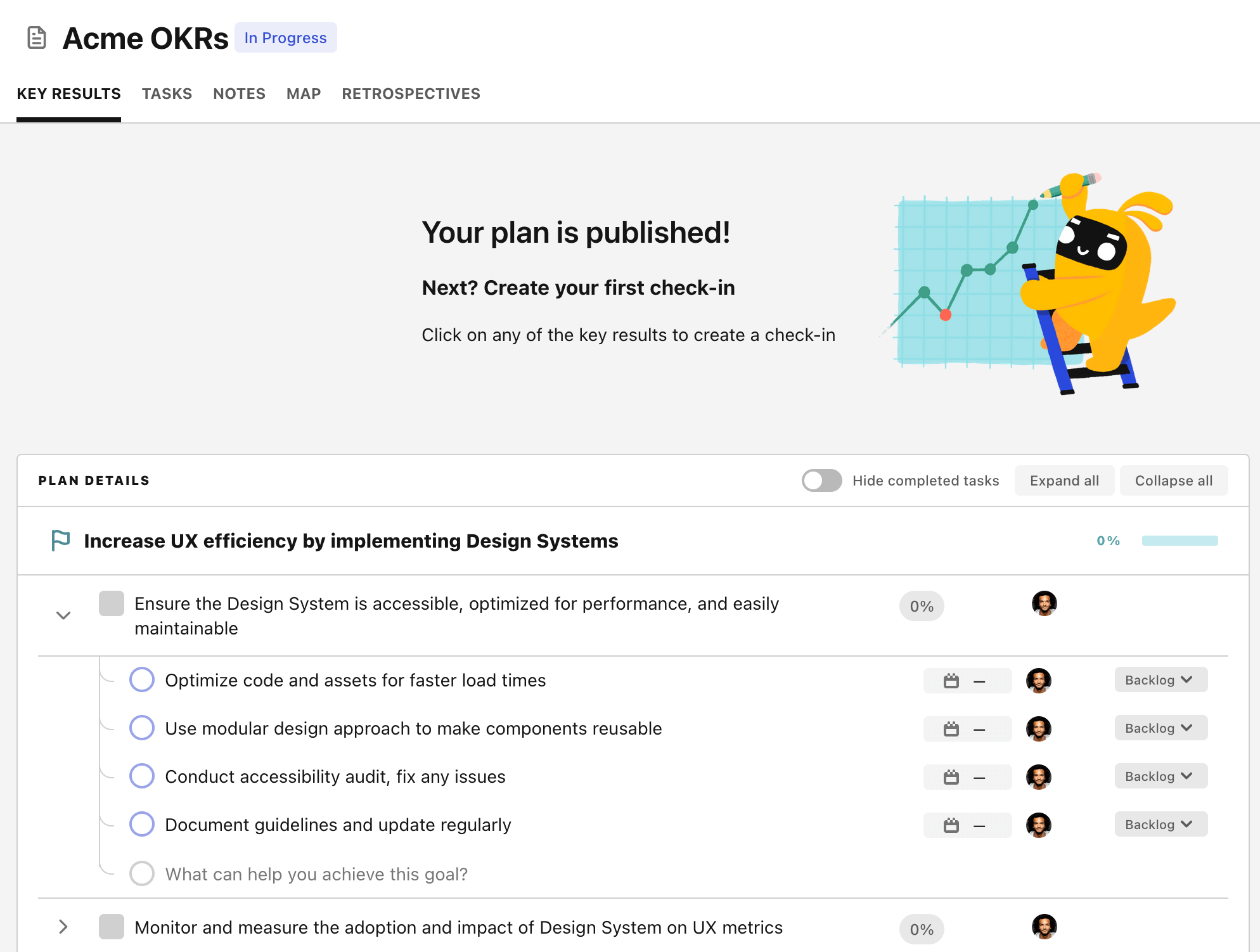OKR template to drive productivity and success through team positivity
Your OKR template
Secondly, the OKR aims to enhance team collaboration efforts by implementing at least two team building activities. Communication is key in successfully executing these events to make sure everyone is aware. Also, suitable activities that accommodate all staff members will be researched, selected, and scheduled to foster team interaction.
Additionally, reducing interdepartmental conflicts by 30% is another essential goal of this OKR. To measure the success of this goal, surveys will be employed. Some of the initiatives to achieve this include establishing a dispute resolution process that every team member understands, mandatory conflict resolution training for all departments, and frequent interdepartmental meetings to enhance communication.
In summary, this OKR is designed to drive team productivity and reduce conflicts while considering everyone's input ensured by proper communication and engagements. The end goal is to maintain a positive atmosphere which will reflect on the overall success of the team.
ObjectiveDrive productivity and success through team positivity
KRIncrease average team productivity by 20% via performance reviews
Motivate improvement through incentives and recognition
Implement feedback and targeted training from reviews
Conduct regular, structured performance reviews for all team members
KREnhance team collaboration efforts by implementing two team building activities
Communicate event details to the entire team
Research relevant team-building activities suitable for all staff
Select and schedule two team-building events
KRReduce interdepartmental conflicts by 30% measured through surveys
Establish a clear, comprehensive dispute resolution process
Implement mandatory conflict resolution training for all departments
Schedule regular interdepartmental meetings for communication
How to edit and track OKRs with Tability
You'll probably want to edit the examples in this post, and Tability is the perfect tool for it.
Tability is an AI-powered platform that helps teams set better goals, monitor execution, and get help to achieve their objectives faster.
With Tability you can:
- Use AI to draft a complete set of OKRs in seconds
- Connect your OKRs and team goals to your project
- Automate reporting with integrations and built-in dashboard
Instead of having to copy the content of the OKR examples in a doc or spreadsheet, you can use Tability’s magic importer to start using any of the examples in this page.
The import process can be done in seconds, allowing you to edit OKRs directly in a platform that knows how to manage and track goals.
Step 1. Sign up for a free Tability account
Go tohttps://tability.app/signup and create your account (it's free!)
Step 2. Create a plan
Follow the steps after your onboarding to create your first plan, you should get to a page that looks like the picture below.

Step 3. Use the magic importer
Click on Use magic import to open up the Magic Import modal.
Now, go back to the OKR examples, and click on Copy on the example that you’d like to use.

Paste the content in the text import section. Don’t worry about the formatting, Tability’s AI will be able to parse it!

Now, just click on Import from text and let the magic happen.

Once your example is in the plan editor, you will be able to:
- Edit the objectives, key results, and tasks
- Click on the target 0 → 100% to set better target
- Use the tips and the AI to refine your goals
Step 4. Publish your plan
Once you’re done editing, you can publish your plan to switch to the goal-tracking mode.

From there you will have access to all the features that will help you and your team save hours with OKR reporting.
- 10+ built-in dashboards to visualise progress on your goals
- Weekly reminders, data connectors, and smart notifications
- 9 views to map OKRs to strategic projects
- Strategy map to align teams at scale